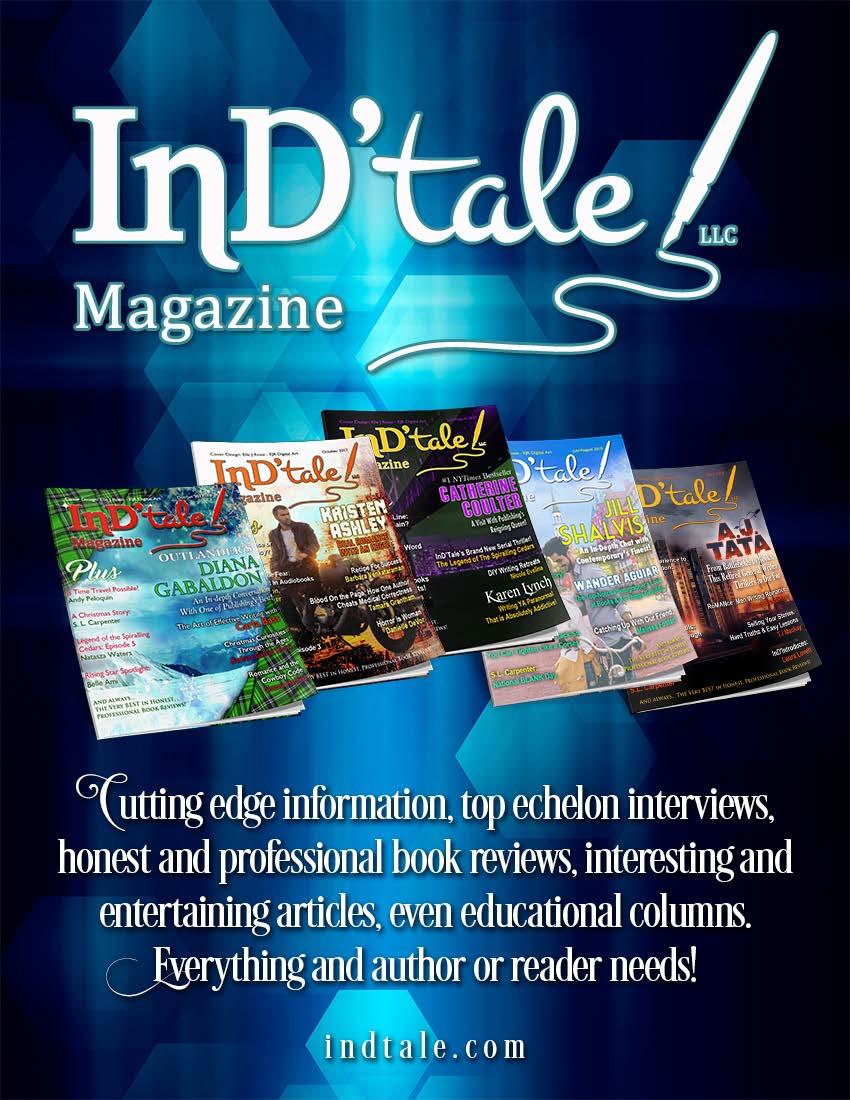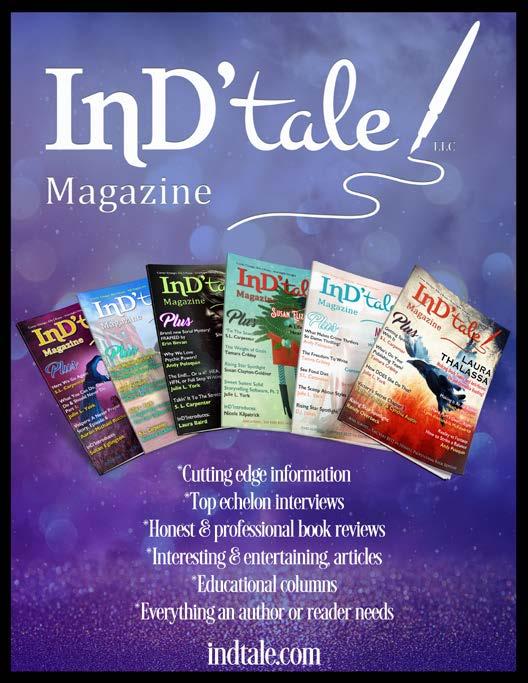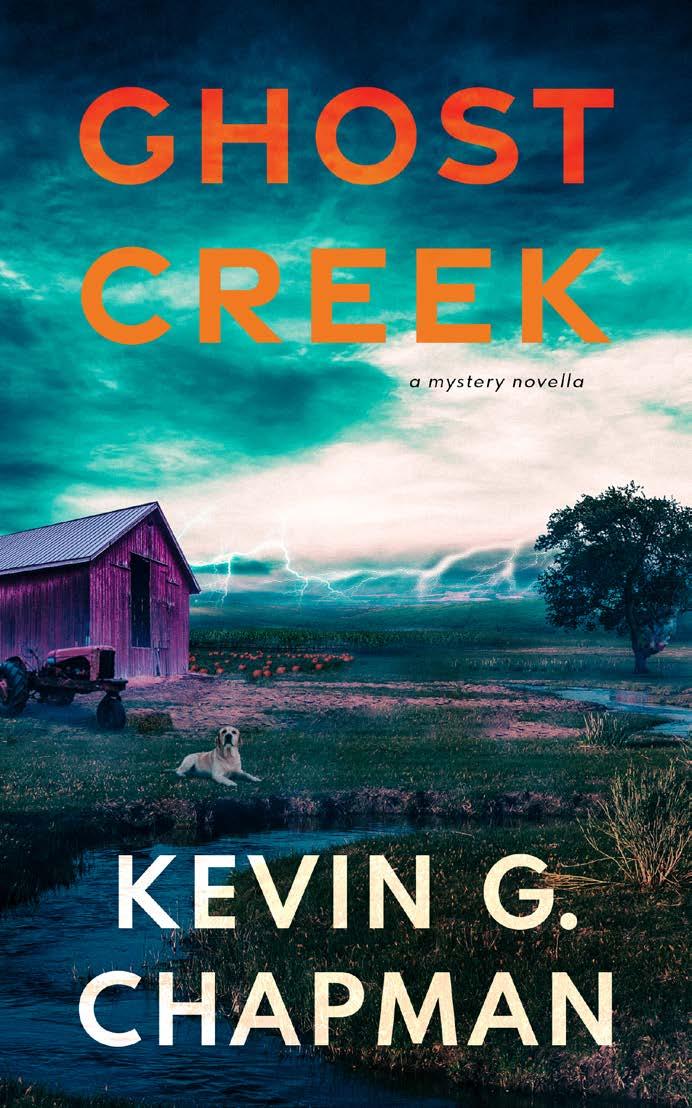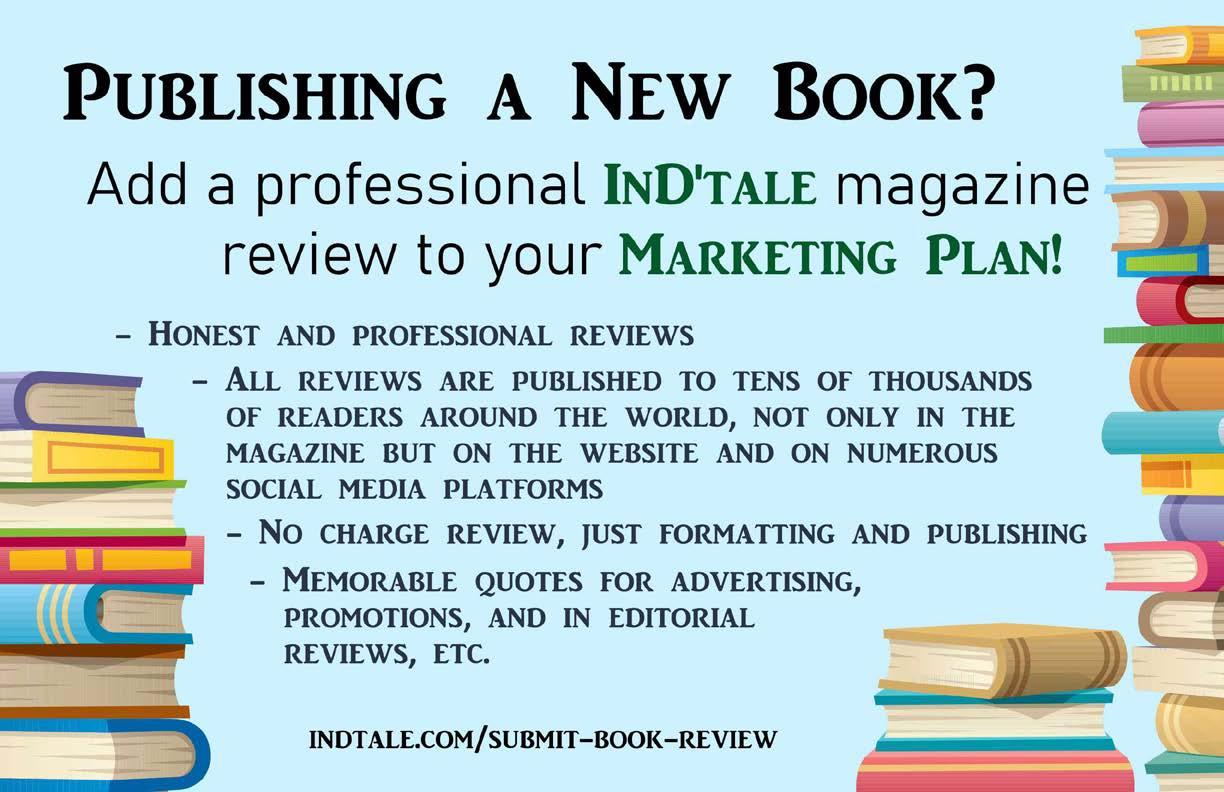
6 minute read
7Suggestions to New, Aspiring Writers
Breakfield and Burkey recently attended a live author-selling event at a library in a small town in North Texas. Many attendees were avid readers, but were also interested in becoming writers. The event was well attended, and we thought others might enjoy the discussion. We selected the best ones to share.
For argument’s sake, let’s say you can’t decide on being a full-time or a part-time writer yet. That choice won’t change what we consider the top seven elements. The good news is you can keep your day job for a couple of years—eat regularly and pay bills. Conversely, working can disrupt your writing cadence, and may take longer to complete your project. You can decide when you are ready.
Advertisement
1 Decide Your Genre
Your decision is often based on what you like and what you know. Picking a category allows you to clarify your target audience. It is easier to successfully bring new works to the market when you understand the primary readers of the subject, be it fiction or non-fiction. For example, romance
By Breakfield and Burkey
fiction typically has a cover reflective of the content rather than a dark background with a hooded killer, whereas self-help appeals to a problem the content solves. The words, covers, formatting, dialogue, pictures, or call-outs stem from your choice. Making this one selection doesn’t mean you are stuck forever. But each manuscript must get targeted to the audience of a specific market.
2 Do Your Homework
In your chosen genre, who are you competing against? Identify the top 100 best sellers on Amazon. Visit a bookstore, see the top books, and ask the sales folks what makes a specific title appeal to their readers. Which of these have you read and why did you like it? If they read a few pages, check them out. Read the back cover. Note the top authors, too. Authors' names and book titles will be useful in your future marketing. Don’t read all of them unless you want to. We suggest this as a skimming session. Make notes on the covers that drew you and those you dislike. Thumb through the pages observing the formatting, font sizes, and readability.
3
Gather Initial Marketing Materials
The activity above is a great start for your future marketing. For most authors, promoting their creations takes more time than writing books. The ongoing selling process stems from a great foundation. Keep notes on keywords, categories relevant to the genre, number of reviews, and authors' social media platforms. You might read what the readers said, noting things they like and landmines to avoid. Every reader will not love even a well-written book, but ferret out the constructive comments. Keep this material handy, like in a separate folder on your laptop. Good selling strategies begin the day you start your manuscript.
4
Are You a Pantser, Plotter, or Hybrid?
Each writer approaches their craft differently. A pantser writes without an outline or, often stated, writing by the seat of their pants. Someone who takes great pains to outline their work in advance or build journey boards is considered a plotter. There is also a hybrid version of writers who start with a broad outline, with chapters roughed out a few at a time. A fabulous, accomplished writer once remarked no one ever gets on a ship without knowing the destination. You need a level of discipline, or the result will suffer.
Build a character list with the names of characters, places, and key pieces of information. For example, Kathy or Katy might be a great name for the lead character in your romance novel. Be consistent with the spelling from page one to the end. You might keep track of your heroine’s hair color to make certain the fiery redhead falling for the Duke of Margerie isn’t depicted as a blond on the cover. Readers don’t like this, especially if the cover was the main reason for their purchase.
5 Step Away From Your Project
We’ve heard “write all of it, then put it away for at least a month before touching again”. This might work for some people who completed a scripted story outline before writing. We’ve also seen writers write 10 to 12 chapters and review them several times before proceeding with the next installment. They claim that the characters sometimes tell the author that a story correction is in order. These hybrid-style writers use some discipline outline structure but couple it with a freeform approach. Learn what works best for you and stick with it.
6 Start Building Your Writer Network
A network for authors consists of many elements outside of your family. Key people to cultivate are other authors or writing groups. Get engaged in one or more author groups as these groups can help you improve in a safe place. Constructive criticism is a valuable learning tool for writers in your selected genre, and outside of it. Friends and family will be encouraging; however, after reading your material, their typical response is, "Good job, and I’m proud of you”—awesome for your ego, but it’s not at all helpful.
Being a member of an author group is a twoway street in that you get and give assistance to improve the piece. You can learn techniques you can mimic while finding issues you don’t want to repeat. These groups aid in the creation of future beta readers, and develop your fans for social media. Marketing is a major piece of your success in the long term. If you find yourself in a group with mean-spirited criticism, seek another group. You do not need to subject yourself to the abuse of anyone when you are learning and growing in this skill. An individual will continue to grow and improve after the first book—or the twentieth.
7 Learn Elements of Book Production
Indie authors who do not get picked up by a publisher must learn about all the elements. Getting a book on the shelves of a physical or virtual bookstore after it is complete needs the following elements:
D An editor-preferably a genre editor, and after that, a proofreader.
D Interior design
D Front cover for the ‘wow’ factor

D Back cover content for sizzle once a perspective reader picks up the book
D Pricing for e-book and paperback versions (audiobooks have several more layers not covered in this article)
D Marketing
An outside editor gives additional perspective. Even seasoned writers miss simple things now and again that an editor will catch. Misspellings or incorrect word usage will ruin the reader's experience.
There are digital tools available to aid this, but take care with uploading your document to just any program. Interior design includes chapter breaks, possibly with interior images for the professional appearance that will draw the reader in, not put them off with impossibly small fonts or poor spacing. As one award-winning graphic artist specializing in book designs once said, “ebooks do not need to be ugly and can embrace color at no additional cost.”
The same goes for cover design. If you did your research, book cover art for your genre may have rules to guide you. Canva, as an example, is helpful if you want DIY. Covers with too many images might confuse the reader. People do buy books from their covers, so it is critical. Plus, times and tastes change. You may want to republish a book to get a more suitable cover or branding image over a series to target your current fans.
The sizzle portion of the back cover of a paperback or summary to hook readers is like a trailer for a movie; it grabs the audience. Reading covers helps, but sometimes getting expert advice can hit that homerun you want.
Pricing is often based on the genre, but printing costs can come into play. You want your book priced at three to four times greater than the print costs to help with your marketing budget and to provide earnings. The retail price needs to land at the same level as your competitors. Remember your initial research on pricing; as a new author, follow the herd.
Marketing is an ongoing effort. It may require a website to showcase your work and social media presence, starting with one or two until you get a fan base and advertising. You should explore big digital marketplaces that will host your website for you rather than trying to build your own. Experience helps with designs, and your author network can often advise you on what works and doesn’t.
If you are committed to writing and publishing a story that will gain valued readers, use your imagination and experience. We don’t advocate a book created using generative A.I. as the end-all be-all. We don’t believe you will get the same level of satisfaction when claiming a software program wrote or built your masterpiece. You might also find out you inadvertently plagiarized another writer. Many generative A.I. programs use opensource input from anywhere and everywhere. If you want the original, write it yourself.
Readers and marketing professionals tell us, why should readers consider it if the book doesn’t appear professionally created with quality writing and presentation? Invest in your product so the readers will spend valuable time reading it.

Penny Thompson expected to sell the family farm after her father died and get back to the city. But finding a body buried by the creek created a mystery. Who was the young boy? And why would somebody bury him on the Thompson farm? Meanwhile, Penny discovered that her father’s open space deal with the town does not obligate her, as she thought, to sell only to the town for the predetermined price. Penny suddenly has options, while she and her high school sweetheart try to unravel the mystery of the murdered boy.













